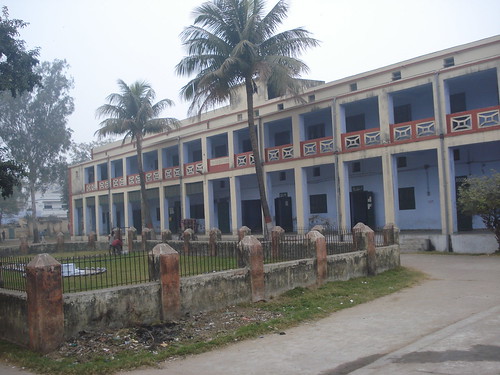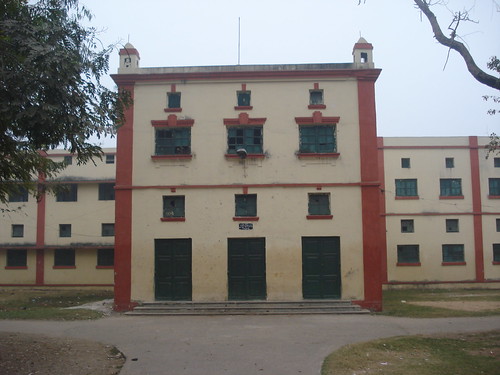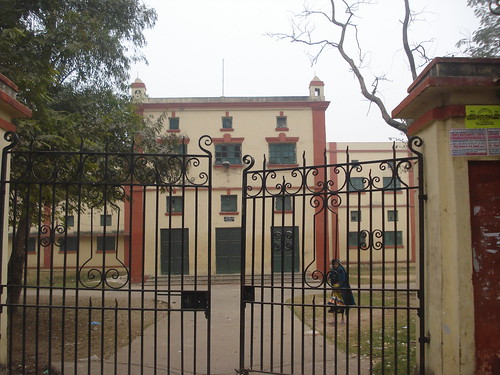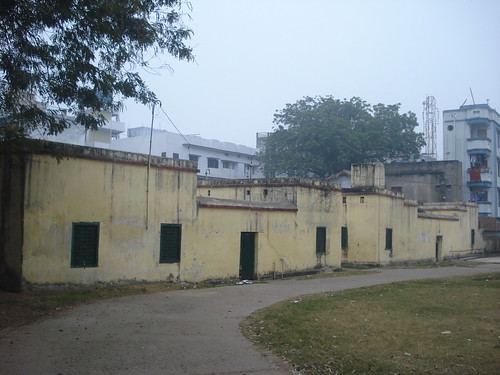By Najam Gilani, TwoCircles.net,
In the University area of Patna, exactly opposite the prestigious Science collage is another institution of equal prestige, if not more. The only difference between the two collages is that one is affiliated with Patna University and has courses of all the streams of arts and science, whereas in the case of other, it follows the PU syllabus but only of arts.
Madrasa Islamia Shamshul Huda- with its sprawling campus, residential facilities, fine Victorian colonial buildings, is the only Madrasa in whole of Bihar, which is a State Government Institution.

Its not that it was initiated by the Government for the purpose of Madrasa Education. The credit of its foundation goes to Justice Syed Norul Hoda who established it in the year 1912 in the Honour of his Father Syed Shamshul Hoda, to provide quality education to Muslim children. Mainly poor Muslim students from all over the state are part of this institution which provides free education and boarding.
After the institution came into existence, on the recommendation of its founder, the Madrasa Examination Board for Bihar and Orissa was established by the then Government of British Empire. Justice Hoda further recommended that all the Madrasas of Bihar should be affiliated with Madrasa Examination Board, which was again approved by the government of the time.
In 1919 the Madrasa Islamia Shamshul Huda became a State Government Institution.
Initially for the first few years Madrasa Examination Board operated from the campus of Islamia Shamshul Huda Madrasa, but later on it was shifted to other independent place and started working as Bihar Madrasa Examination Board.

Important to note here that after the separation of Bihar and Orissa as a province in the year 1936, the board was left to look only after the affairs of Bihar Madrasas.
The greatest concerns of its founding fathers, were that it should not become an alienated institute whose products in the long run become isolated from the benefit of mainstream education, hence they thought it fit to invite the two best known Muslim Scholars of that time—Maulana Manazir Hasan Gilani and Syed Sulaiman Nadvi, to write the Madrasa Syllabus—-and duo wrote it keeping in mind the details of modern mainstream education.
The primary syllabus – it is of three level upto 10th-Tahtania/Wastania/Fauqania-consists of entire syllabus of Sate Education Board—–Religious Studies, Arabic Literature, Urdu, Farsi, Hindi, English, Math, Science Social Studies, Geography, and General Knowledge.

The intermediate level of Madrasa is known as “Maulvi’ level. It consists the same subject as above with few optional subjects as History, Civics, Pshycology, Islamic History, Bangla and Maithili.
Certificate of Maulvi is equivalent only to Intermediate of Arts (IA) i.e. Maulvi’s are not part of Science stream.
The Graduate Degree level of Madrasa is known as “Aalim” level. It consists of entire syllabus of Patna University.

The Masters Degree level of Madrasas is known as “Fazil” level. It also consists of entire syllabus of Patna University
Madrasas across the length and breadth of the country have adopted the above mentioned syllabus of Bihar Madrasa Examination Board.
Everything was perfectly in place till the independence;
Till Independence Madrasa qualified “Qazi” used to be employed by the government for the purpose of performing Nikah of Muslim Couples.
Till Independence Madrasa qualified “Registrar” used to be appointed by the Government for the purpose of keeping records of Nikah performed by a Qazi.

Till Independence a Madrasa qualified Faazil (equivalent as MA) used to be appointed as Lecturer in Government Collages.
Till Independence Madrasas students were eligible for almost every Government jobs and they were spread all over.
But since Independence the post of Qazi and Registrar for Nikah purpose was abolished. Appointments of Madrasa students to all other Government departments were stopped. Currently despite being a Government Organization, Madrasa Islamia Shamshul Huda is no less than an orphan institute. Its condition is much more pathetic in comparison to the private ones- because the government doesn’t look after it and private donors assume that its run by government so it doesn’t need fund. The negligence of the government has turned its sprawling campus and magnificent colonial buildings into a dilapidated structure. The indifference of the of the government can be judged from the fact that not even single hostel has been built since independence.
It certainly is not a rocket science to understand that lack of teachers means poor quality of students. From 1919 till 1935 there were post of 19 teachers and one principal and in 1935 again one more post of a teacher was approved, but since the past three decades fifty percent of teachers post of Madrasa Islamia Shamshul Hoda is lying vacant.
That was about the campus, structure and teachers. The pass outs of the campus were made to go through much more painful, frustrating and troubling experience of unemployment. The problem started when other states refused to appoint students from these madarsas on the pretext that their degree is not equivalent to master’s level. The reason they cited was that Madrasa education from primary till Masters was of 15 years, where as in universities it was 17 years of education.
This led to a massive protest March by All Bihar Madrasa Students Union, so to look on the issue the State Government of the time appointed the Madrasa Board Syllabus Committee, which submitted their report recommending the Madarsa education until 17 years. Committee presented the report in 1976 and two years later government approved it by gazette notification.
Now the catch here is that the Government did not accepted a “Fazil” equivalent to an MA saying that it will be approved by the UGC. It again led to the protests by the students, so government appointed Kothari Comission to look into the matter. The Kothari Commission recommended that Fazil should be considered as Graduate trained—Meaning they are trained for teacher’s job, which the government accepted.
Orally at least this was in practice till the year 2005.Three years ago Janata Dal-United (JD-U) Government of the state refused to accept it and Chief Secretary of Education Board M M Jha recommended the issue to NCERT, which further said that “Fazil” cannot be considered as “Graduate trained” for the purpose of teachers job.
Madarsa students in hapless tone says; what crimes have we committed that society in general and Governments in particular mete out such an indifferent treatment to us. Our Degree have been made equivalent but it doesn’t get equal recognition which it deserves, on the basis of which we find it difficult to land in job. We get labeled as ignorant, radical Mullahs from moderates and intellectuals alike, they assume us to be scholars of science of religion, whereas all we do is study just like them—-do we expect all the students of other collages to be scholar at par of the subjects they read—despite all the facilities there’s no such expectation from them—-how are we different? We in fact have fewer resources. We wonder why so much fuss about Madarsas.
In the name of being a government organization, the only thing institute gets is the (irregular) teacher’s salary, besides the contingency fund——fund allocated as per the requirement—-but it doesn’t get approved always due to red tapism.
